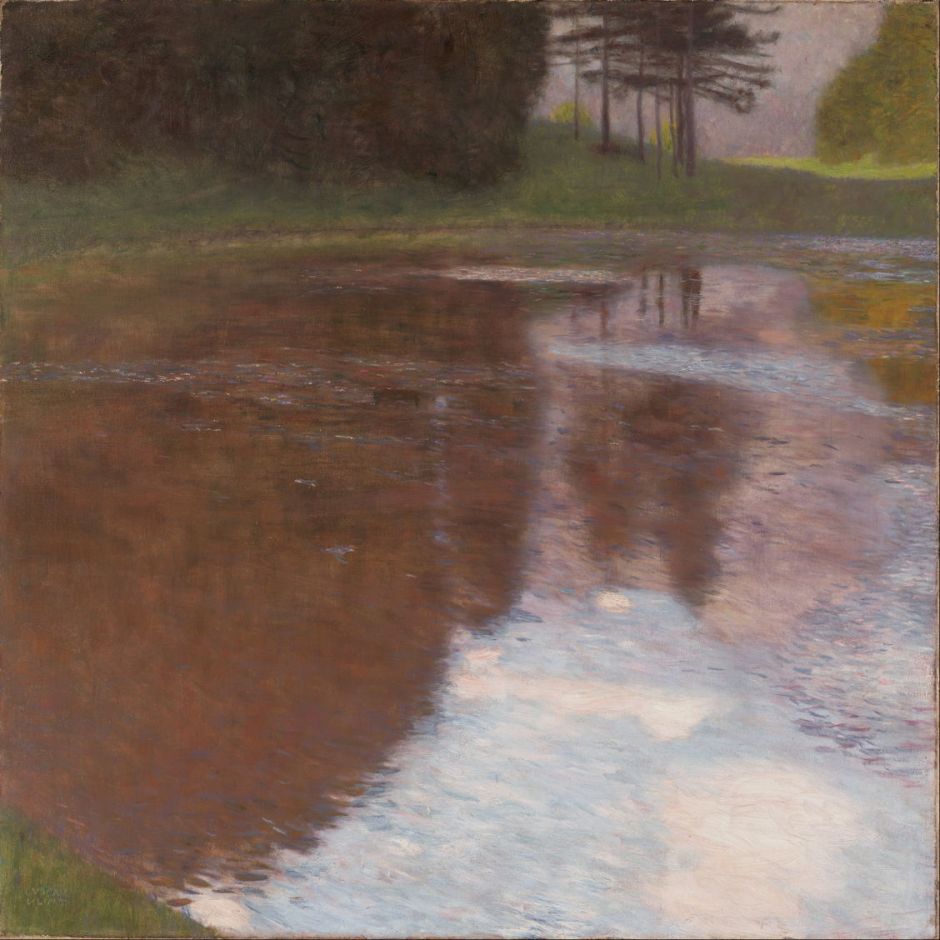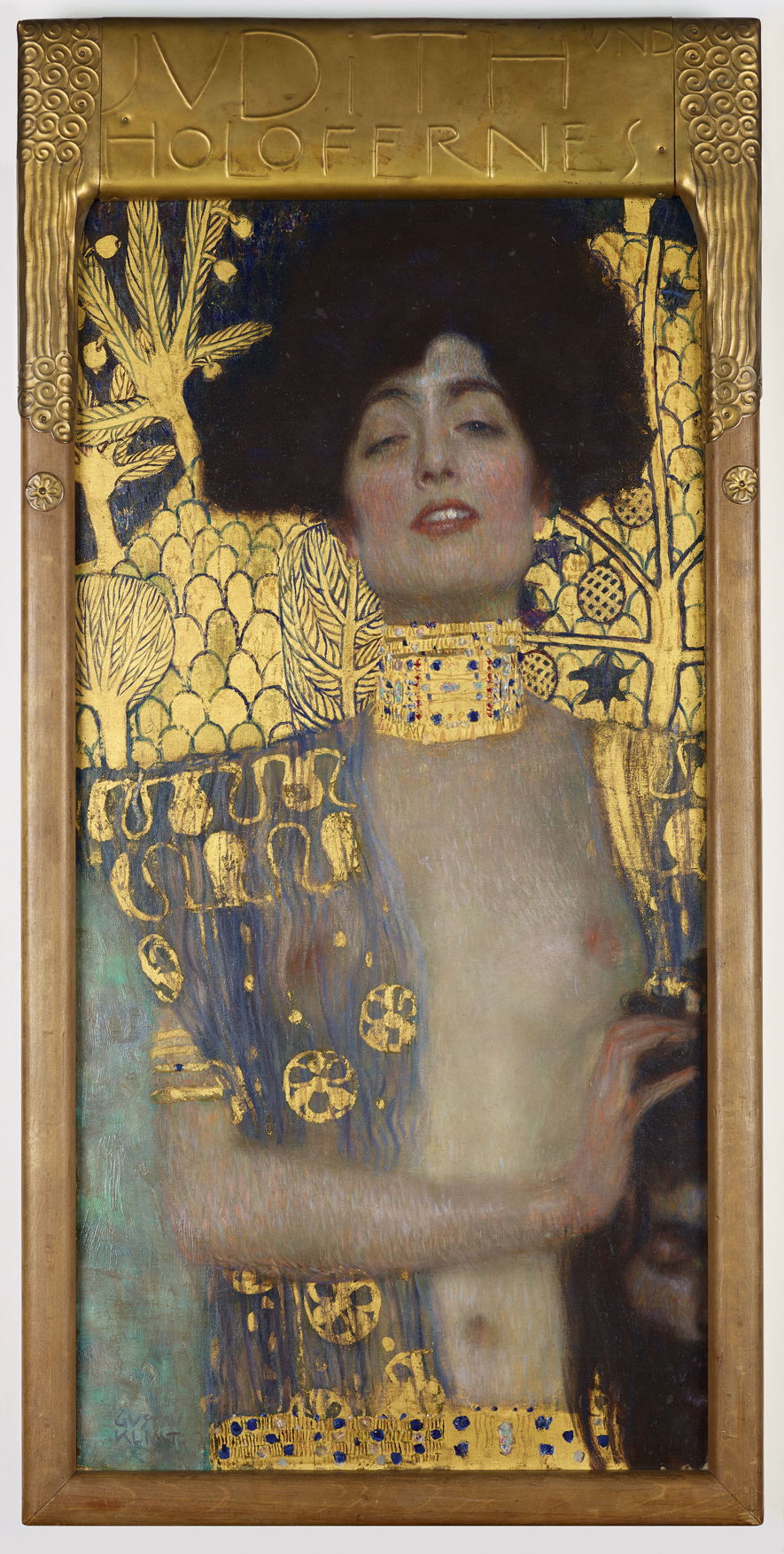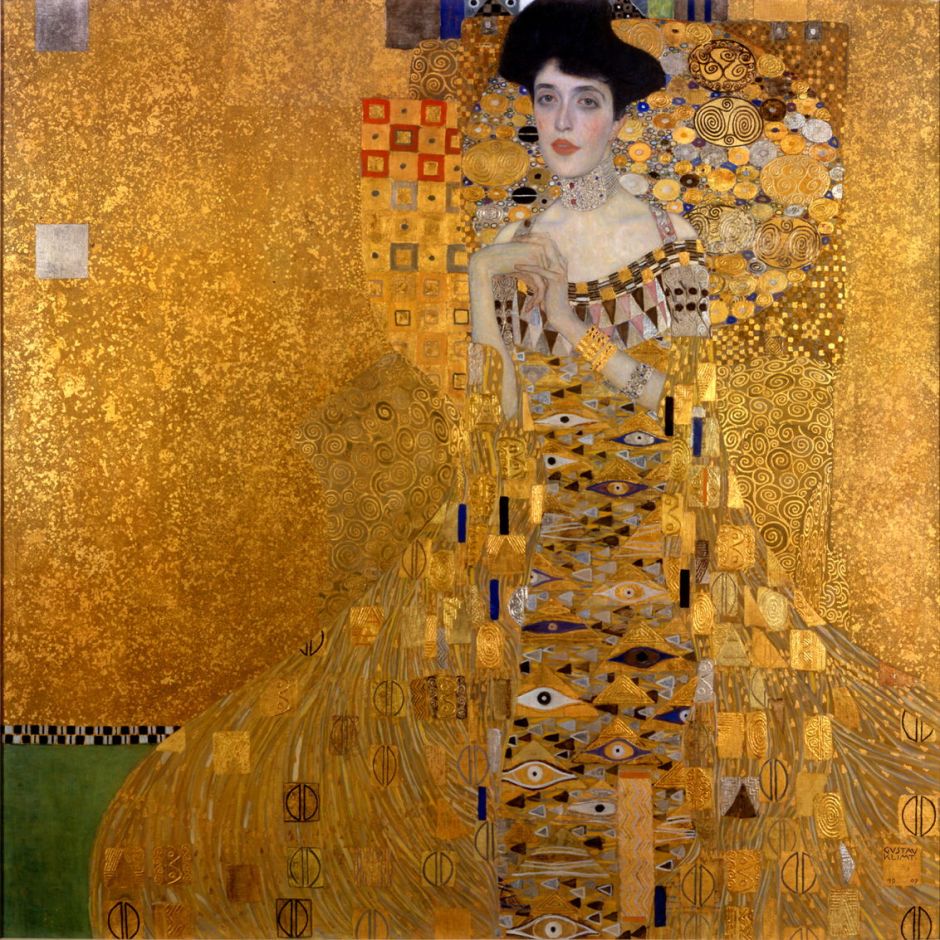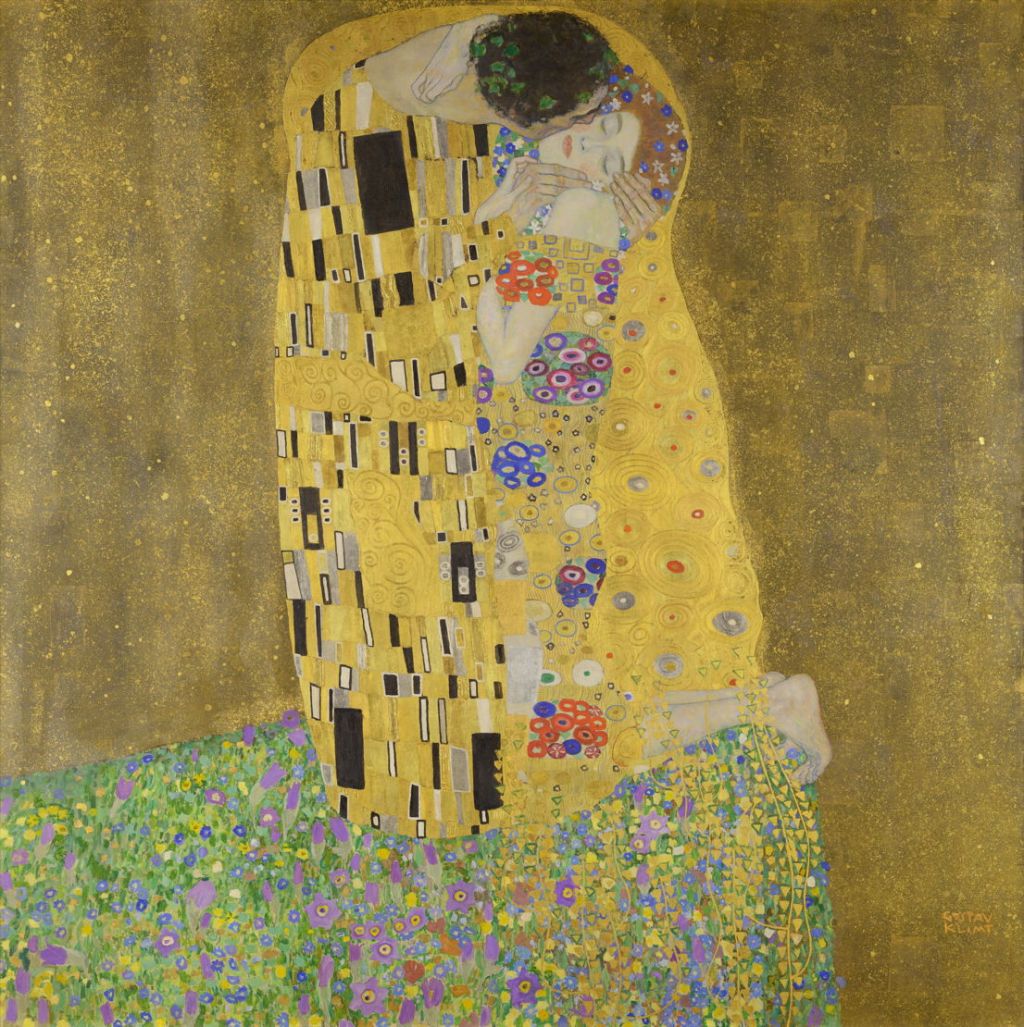One hundred years ago today, on 6 February 1918, the great Viennese artist Gustav Klimt died.
To commemorate this, over the last few weeks I have been looking at some of his paintings. In case you missed any, there is a set of links at the end of this article. Here I show some of my favourites among Klimt’s work, and draw some conclusions about his tragically shortened career.

Klimt trained and worked not just as an artist, but as a craftsman too, and worked with other craftsmen to present his paintings in exactly the way that he envisaged. This painting of Pallas Athena (1898) is one of the first in which he incorporated gold. The goddess may appear very modern, but Klimt keeps to tradition by showing her attributes, including the aegis of Medusa’s head over her upper chest, a spear and helmet.
Klimt’s involvement with and support for craftsmanship led to his split from the Vienna Secession. Others wanted its exhibitions to include only paintings and sculpture – the ‘fine arts’ – but Klimt would not accept the exclusion of crafts.

Klimt devoted his life to painting, working hard in his studio, and painting when he went on holiday. Each summer, he stayed with the family of his partner, Emilie Flöge, and there painted series of landscape works outdoors on uniform 110 cm square canvases. Unlike most tourists, though, Klimt didn’t go out and paint typical landscape views: he almost ignored the scenery around him, working instead on meticulously detailed depictions of the local countryside.
In 1899, one of the three landscapes he is believed to have painted was this Tranquil Pond, with its closely-observed reflections on the water surface.

The following year, he painted two remarkable studies of the texture and colour of the surface of the Attersee (1900), with unusual colour harmonies and painstakingly measured brushstrokes.

Back in Vienna, Klimt’s art centred on women. Unlike other artists of the day, though, it is empowering rather than exploitative. In Judith I (1901), he portrays a woman of power, whose pleasure results from her successful manipulation of the enemy general, Holofernes, and her subsequent beheading of him. Klimt leaves the ambiguity of her ecstasy, though, playing on the developing link between eroticism and death.

His Portrait of Emilie Louise Flöge (1902) shows Klimt’s partner, a successful fashion designer in her own right. He believed that the decorative has a part in art, and this and many of his portraits and other works combine representative passages with exuberant flights of pure decoration.

When he was on his summer holiday in 1902, he worked painstakingly to build contrasting patterns into Beech Forest I. The fine Divisionist marks of the ground alternate with patches of light, brilliant green foliage, and distant sky to give this painting a unique appearance and visual effect, something distinctive of Klimt.
These landscapes are an integral part of his work, which cross over into his figurative paintings. Klimt was never a painter of views, but used his landscapes as studies for his work in the studio, and I suspect as relaxation.

An example of this is in his floral paintings, which started on holiday with works like this Cottage Garden with Sunflowers (c 1907), in turn feeding the floral motifs with which he decorated the clothing and backgrounds of his figures.
Klimt’s abundant drawings demonstrate that he was a fine draftsman. He was technically adept, and worked hard to make each painting as perfect as he could.

Inspired by the early Byzantine mosaic showing the Empress Theodora, in the Basilica San Vitale in Ravenna, Italy, the peak of Klimt’s Golden Phase is unique in art.
Much of the surface of his first Portrait of Adele Bloch-Bauer is encrusted with gold and silver, and decorated with symbols of eyes, flowers, whorls, ellipses divided into halves, and rich textures worked into the gold leaf. To accomplish this involved a great deal of craftsmanship, using age-old techniques developed before the Renaissance, and took long days handling delicate leaves of precious metal.

In other respects, Klimt remained quite traditional too. His re-telling of the myth of Danaë (1907) is not a Symbolist fantasy, but a literal depiction of the myth following the artistic tradition. His tools and style, though, are highly original.

Klimt’s masterworks remain modern in their look, even though they are now over a century old. The Kiss (1907–08) would have been as sensational a decade ago as it was before the First World War. His major paintings tackle timeless themes using an ageless language.

Klimt believed that great art should look great, from its facture and frame to its overall look, and his choice of theme. In his second version of Judith (1909), he revisited the story of Judith and Holofernes, blurring it with that of Salome. The result is an even bolder examination of erotic power.

Klimt’s paintings draw us to look afresh at their subjects. Just as his figurative paintings offer new views of woman, so his landscapes provide a new way to look at the world around us. With their depth removed, we distinguish form, structure, and meaning from their patterns, textures, and colours.
Gustav Klimt did not bury his images in esoteric philosophy: they are accessible to all. You only have to look at his paintings to enjoy the work of a true Master. He remains one of the most important artists of the early twentieth century.
Gustav Klimt’s life and art:
1, decorator and painter
2, portraits and vacations
3, burnish and beeches
4, the Golden Phase
5, textures and patterns
6, life and death
Related contemporary artists:
Gustav Klimt’s colleagues: paintings of the Vienna Secessionists
Among the Hutsul: the oils and pastels of Teodor Axentowicz

